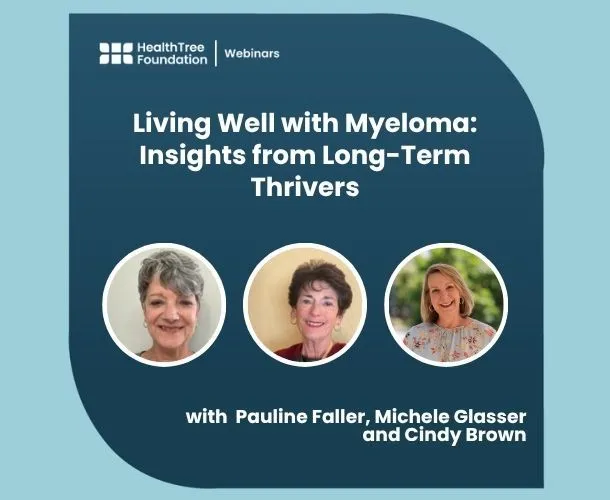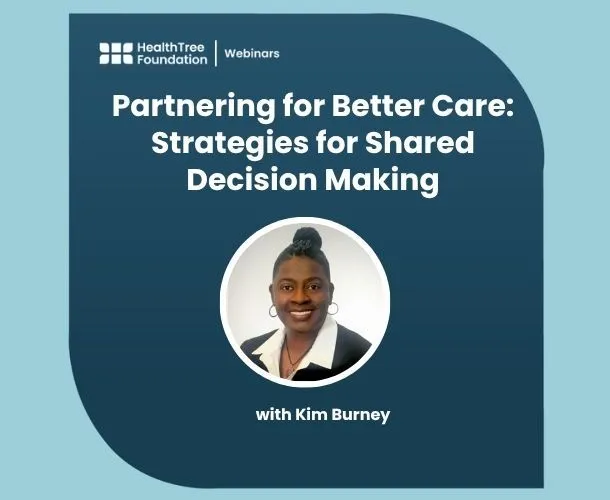What Did ASH 2015 Mean For The Myeloma Patient? HOPE!

BY GARY PETERSEN There was so much great news that came out of ASH 2015, and the volume of technical information was more than enough to get your head to spin, It was easy to become overwhelmed with the complexity and detail. It continues to support my belief that myeloma specialists are very knowledgeable about this disease and keep up with the most recent flood of new promising research, and they are the only ones truly able to adequately treat or provide a treatment plan for myeloma patients. Now that I have had time to digest the mountain of information, and I can actually break ASH 2015 into just one word for the myeloma patient community and the word is HOPE. My takeaways from the meeting include: - Great new drugs have been approved for Relapsed and Refractory myeloma patients. Daratumumab, Elotuzumab, and Ninlaro all could be game changers, and will work best in combination with existing novel agents. In addition, a host of other new drugs are under development or in clinical trials. - Immunotherapy has taken center stage at ASH in general and for myeloma specifically. Great work is underway with the use of CAR T cells, MILs and the use of dendritic cells to develop a vaccine. Initial results have shown some patients with 90+ percent plasma cells in the marrow going all the way to 0. Cure potential? Maybe!. - The existing treatments have become seasoned and now show improved progression free survival and overall survival. RVd (Revlimid, Velcade,dex) has been proven to be more effective than Rd. Mayo Clinic has modified their excellent mSmart treatment recommendations to substitute RVd for Rd and CyBorD (Cytoxan, bortezomib, dex) for standard and intermediate risk patients. The use of Kyprolis and Pomalyst are being used in combination with just about everything in clinical trials and will one day be part of approved initial therapy for newly diagnosed patients. KRd, with and without transplant, has shown some great results. - There has been a consolidation of the treatment continuum. Most now agree to a regimen for newly diagnosed transplant eligible myeloma patients of induction, transplant(one or two), consolidation, and maintenance(finite or continuous). - High Risk disease has been identified as an unmet need in the specialist community with many new treatments developed which now negate some negative prognostic indicators, and more are in the clinical trial pipeline. Daratumumab and Elotuzumab in various combinations have shown efficacy for some high risk features. - Minimal Residual Disease testing has become a required test to help to follow disease progression. New Next Generation Sequencing has made testing for residual disease far more sensitive. It appears to be the next leap forward in testing. - Gene Expression Profiling is the key to future advances in patient specific treatments. This provides a baseline to guide treatment discussions in the future. You will never have an accurate baseline without this profiling. - Drug companies have begun to partner with patient advocates to help improve awareness in the general population and in the General Practitioner community. Takeda supported the MCRI high risk cure initiative, and Sanofi supported the Mambo for Myeloma awareness and funding initiative. I hope this becomes part of all drug company patient advocacy programs. This is a big step in changing the image of the drug companies from Big Bad Pharma to a real Myeloma Partnership. Misdiagnosis and delayed diagnosis is one of the biggest unmet needs and this might be a life-saving cooperative effort to change this. These are my top line reads of what the game changing developments were at ASH 2015. If you want to drill down into the detail you can search by the keyword Multiple Myeloma and read all of the abstracts from the conference. There are nearly 300 myeloma abstracts. So we have some outstanding news out of ASH, but where do we go from here? - The new monoclonal antibodies (DARA and ELO) drugs have been approved for Relapsed and Refractory patients, and will be mixed and matched with all of the currently approved drugs in the newly diagnosed and relapsed and refractory population. - Ninlaro as an oral treatment will eliminate the myeloma patient's weekly or biweekly infusions when taking IV or subQ injections of a proteasomee inhibitor. Insurance companies should love this because it will eliminate the $1500 to $3000 infusion cost. The cost to Medicare patients will be an issue because the law prevents drug companies from providing copay assistance to the elderly. They do allow it for younger working patients with commercial insurance. I hope our government is ignorant of this unmet need and not uncaring of the needs of elderly cancer patients. - Investment in Immunotherapy is a challenge. Most funding for new drugs come from the drug companies, and they have not as yet jumped on this bandwagon. Celgene is the first to do so, and now we have such great initial data I think the wagon will be full in no time. Those that do not get with this program will be at a competitive disadvantage. - Myeloma Specialists know about these new drugs, the importance of MRD testing, and the need for Gene Expression Profiling, but how do we get the local oncologist up to speed on the breakneck progress being made in myeloma treatment? And 1 in 5 myeloma patients continue to die from misdiagnosis and delayed diagnosis. This is an unmet need and I am hopeful the new drug company patient partnership may have an impact. - Progress in high-risk disease will ultimately be the key to a cure in all myeloma. Myeloma Specialists recognize this and a new focus is being made in high risk disease. A specialist and patient advocate initiative called the MCRI (Myeloma Crowd Research Initiative) is another part of this new focus. Good luck and God Bless your Myeloma Journey/ editor@myelomasurvival.com For more information on multiple myeloma CLICK HERE and you can follow me on twitter at: https://twitter.com/grpetersen1
BY GARY PETERSEN There was so much great news that came out of ASH 2015, and the volume of technical information was more than enough to get your head to spin, It was easy to become overwhelmed with the complexity and detail. It continues to support my belief that myeloma specialists are very knowledgeable about this disease and keep up with the most recent flood of new promising research, and they are the only ones truly able to adequately treat or provide a treatment plan for myeloma patients. Now that I have had time to digest the mountain of information, and I can actually break ASH 2015 into just one word for the myeloma patient community and the word is HOPE. My takeaways from the meeting include: - Great new drugs have been approved for Relapsed and Refractory myeloma patients. Daratumumab, Elotuzumab, and Ninlaro all could be game changers, and will work best in combination with existing novel agents. In addition, a host of other new drugs are under development or in clinical trials. - Immunotherapy has taken center stage at ASH in general and for myeloma specifically. Great work is underway with the use of CAR T cells, MILs and the use of dendritic cells to develop a vaccine. Initial results have shown some patients with 90+ percent plasma cells in the marrow going all the way to 0. Cure potential? Maybe!. - The existing treatments have become seasoned and now show improved progression free survival and overall survival. RVd (Revlimid, Velcade,dex) has been proven to be more effective than Rd. Mayo Clinic has modified their excellent mSmart treatment recommendations to substitute RVd for Rd and CyBorD (Cytoxan, bortezomib, dex) for standard and intermediate risk patients. The use of Kyprolis and Pomalyst are being used in combination with just about everything in clinical trials and will one day be part of approved initial therapy for newly diagnosed patients. KRd, with and without transplant, has shown some great results. - There has been a consolidation of the treatment continuum. Most now agree to a regimen for newly diagnosed transplant eligible myeloma patients of induction, transplant(one or two), consolidation, and maintenance(finite or continuous). - High Risk disease has been identified as an unmet need in the specialist community with many new treatments developed which now negate some negative prognostic indicators, and more are in the clinical trial pipeline. Daratumumab and Elotuzumab in various combinations have shown efficacy for some high risk features. - Minimal Residual Disease testing has become a required test to help to follow disease progression. New Next Generation Sequencing has made testing for residual disease far more sensitive. It appears to be the next leap forward in testing. - Gene Expression Profiling is the key to future advances in patient specific treatments. This provides a baseline to guide treatment discussions in the future. You will never have an accurate baseline without this profiling. - Drug companies have begun to partner with patient advocates to help improve awareness in the general population and in the General Practitioner community. Takeda supported the MCRI high risk cure initiative, and Sanofi supported the Mambo for Myeloma awareness and funding initiative. I hope this becomes part of all drug company patient advocacy programs. This is a big step in changing the image of the drug companies from Big Bad Pharma to a real Myeloma Partnership. Misdiagnosis and delayed diagnosis is one of the biggest unmet needs and this might be a life-saving cooperative effort to change this. These are my top line reads of what the game changing developments were at ASH 2015. If you want to drill down into the detail you can search by the keyword Multiple Myeloma and read all of the abstracts from the conference. There are nearly 300 myeloma abstracts. So we have some outstanding news out of ASH, but where do we go from here? - The new monoclonal antibodies (DARA and ELO) drugs have been approved for Relapsed and Refractory patients, and will be mixed and matched with all of the currently approved drugs in the newly diagnosed and relapsed and refractory population. - Ninlaro as an oral treatment will eliminate the myeloma patient's weekly or biweekly infusions when taking IV or subQ injections of a proteasomee inhibitor. Insurance companies should love this because it will eliminate the $1500 to $3000 infusion cost. The cost to Medicare patients will be an issue because the law prevents drug companies from providing copay assistance to the elderly. They do allow it for younger working patients with commercial insurance. I hope our government is ignorant of this unmet need and not uncaring of the needs of elderly cancer patients. - Investment in Immunotherapy is a challenge. Most funding for new drugs come from the drug companies, and they have not as yet jumped on this bandwagon. Celgene is the first to do so, and now we have such great initial data I think the wagon will be full in no time. Those that do not get with this program will be at a competitive disadvantage. - Myeloma Specialists know about these new drugs, the importance of MRD testing, and the need for Gene Expression Profiling, but how do we get the local oncologist up to speed on the breakneck progress being made in myeloma treatment? And 1 in 5 myeloma patients continue to die from misdiagnosis and delayed diagnosis. This is an unmet need and I am hopeful the new drug company patient partnership may have an impact. - Progress in high-risk disease will ultimately be the key to a cure in all myeloma. Myeloma Specialists recognize this and a new focus is being made in high risk disease. A specialist and patient advocate initiative called the MCRI (Myeloma Crowd Research Initiative) is another part of this new focus. Good luck and God Bless your Myeloma Journey/ editor@myelomasurvival.com For more information on multiple myeloma CLICK HERE and you can follow me on twitter at: https://twitter.com/grpetersen1

about the author
Gary Petersen
Gary is a myeloma survivor and patient advocate. His work centers around helping patients live longer by helping them to find facilities who are beating the average survival statistics. You can find Gary's site at www.myelomasurvival.com and follow him on Twitter at @grpetersen1
More on Treatment Advances
Trending Articles




Get the Latest Multiple Myeloma Updates, Delivered to You.
By subscribing to the HealthTree newsletter, you'll receive the latest research, treatment updates, and expert insights to help you navigate your health.
Together we care.
Together we cure.
3x Faster.












